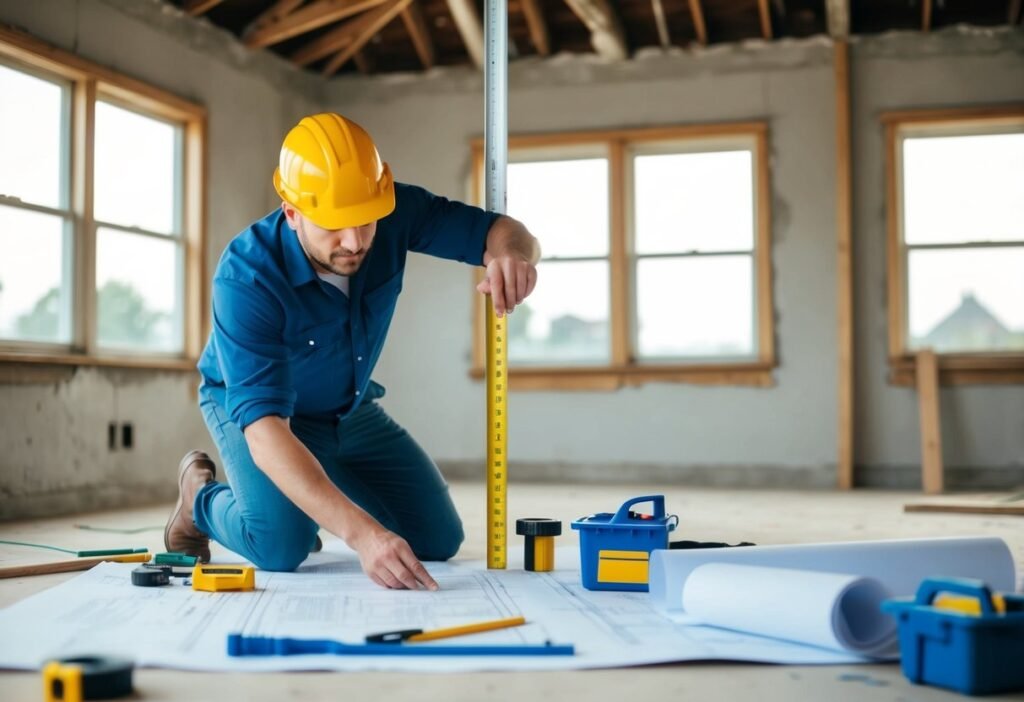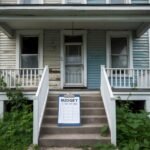Flipping houses can offer a rewarding return, but only if you understand the numbers upfront. Accurately estimating renovation costs is essential for ensuring your flip project remains profitable and avoids unexpected financial setbacks. Whether you’re new to real estate or looking to refine your process, having a clear budgeting strategy puts you in control.
This practical guide will walk you through proven methods to evaluate renovation expenses from start to finish. With the right approach, you can confidently assess repairs, compare contractor bids, and factor in every detail that impacts your investment. Making informed renovation estimates helps you reduce risk and maximize your returns in competitive markets.
Key Takeaways
- Get a clear process for estimating costs before starting any flip.
- Learn what factors most affect your renovation budget.
- Gain financial strategies to help your house flipping investment succeed.
Essential Factors for Estimating Renovation Costs
Accurate renovation budgeting relies on a clear evaluation of the property, an understanding of labor and material needs, and insight into broader economic and neighborhood trends. Considering these factors helps you make informed decisions and prevent costly errors during your flip.
Analyzing Property Condition
Begin by assessing the overall condition of your fixer-upper or distressed property. Perform a detailed walk-through, documenting any structural damage, roof issues, plumbing concerns, and outdated electrical systems.
Look for visible problems like water stains, cracks in the foundation, or signs of pests. Create a room-by-room checklist for cosmetic updates versus essential repairs. Identifying hidden defects early is vital because unexpected expenses can quickly erode profit margins.
Hiring a qualified inspector improves accuracy. They help you spot what you might miss, such as decaying framing or faulty wiring. Clear documentation ensures your renovation plans—and your budget—cover all necessary repairs.
Budgeting For Materials and Labor
Labor and materials make up the bulk of renovation costs. Listing all needed improvements, such as flooring, cabinets, fixtures, and paint, lets you estimate costs line by line. Use recent price data from trusted suppliers to minimize surprises.
For labor, request multiple bids from experienced contractors and carefully compare their experience levels and references. Factor in project management fees, permit costs, and any likely overtime charges. Labor rates can change with demand, so revisit your estimates if market conditions shift.
Add a 10–20% contingency buffer for unexpected expenses—especially in older homes where unseen repairs often arise. Keeping thorough records of quotes and invoices will streamline your project management and support accurate budgeting. For more detail on these budgeting concepts, see this guide from BiggerPockets on estimating rehab costs in real estate.
Evaluating Market Influences on Cost
The real estate market directly affects renovation costs. During periods of high market demand, costs for labor and materials typically increase due to competition. Monitor pricing trends for key items like lumber, roofing shingles, and appliances.
Availability of contractors can also tighten in hot housing markets, pushing costs higher or leading to project delays. Stay alert to fluctuations in the broader economy that may affect interest rates and purchasing power. This impacts both your renovation budget and your eventual sale price.
Review comparable home sales nearby to understand how much to invest without exceeding the potential property value. Over-renovating can eat into resale profit, especially in slower housing market conditions. Regularly adjust your projections as market conditions change.
Assessing Location and Neighborhood Impact
Location strongly impacts renovation costs and eventual returns. Properties in neighborhoods with good schools, low crime rates, and strong local amenities often justify higher-quality finishes and may support a larger renovation budget.
Areas with rising property values and high buyer demand tend to yield better returns, while homes in declining neighborhoods or regions with high crime rates may struggle to command a profitable sale price after renovations. Investigate local zoning laws, planned developments, and property tax rates, as these can affect both project expenses and future value.
Consult recent listings and sales data to confirm your investment aligns with local real estate trends. Understanding neighborhood-specific demand ensures your home improvement choices match buyer expectations and market realities. For more guidance specific to renovation cost factors, visit this resource on estimating renovation costs.
Financial Planning and Investment Strategies

Effective financial planning is essential for any real estate investor flipping homes. Knowing your financing options, calculating all costs, and consulting with professionals sets your projects up for profitability and minimizes risk.
Understanding Project Financing Options
You have several financing methods to consider for a flip property. Traditional mortgages often have stricter approval requirements and may not be ideal for distressed properties. Many real estate investors use hard money loans or borrow from a private lender to secure quick funding.
Hard money lenders typically offer faster approval and flexible terms, but interest rates and fees can be higher than traditional banks. Weigh the costs of borrowing against your expected returns before choosing a loan.
Some investors use a mix of financing, combining personal funds with borrowed capital to manage cash flow and reduce risk. Researching different loan products and comparing mortgage rates helps you secure the most favorable terms.
Calculating Total Investment and Resale Value
To estimate renovation costs accurately, you must calculate the total investment for your flip project. Add together the purchase price, renovation costs, closing costs, and ongoing carrying costs such as property taxes and utilities. Factor in unexpected expenses by setting aside a contingency fund of around 10-20%.
Evaluate the potential resale value by analyzing recent comparable sales in the area. Consider improvements that add value, but be realistic about what buyers will pay.
Use this formula:
Total Investment = Purchase Price + Renovation Costs + Closing Costs + Carrying Costs + Unexpected Expenses
Profit = Expected Resale Value – Total Investment
Review estimates frequently to ensure your flip project remains financially viable throughout construction. Read more about budget breakdowns and considerations for house flipping costs.
Working With Professionals for Accurate Estimates
Partnering with experienced professionals is a key investment strategy for successful flips. Real estate agents help you gauge realistic resale values and find profitable investment properties. Licensed contractors provide detailed scope-of-work breakdowns and improve the accuracy of renovation budgets.
Consulting a qualified accountant or financial advisor may help you avoid costly mistakes, especially if you are new to real estate investment. Get multiple bids from contractors and review their track record before signing agreements.
It’s important to review and negotiate all contracts in advance. This reduces risks tied to change orders, delays, or unexpected expenses. Collaborating with knowledgeable professionals ensures your estimates reflect true market conditions and project demands.
Frequently Asked Questions
Estimating renovation costs for flips requires careful evaluation of multiple variables, from property condition to market expectations. Accurate budgeting will depend on your methods, awareness of common mistakes, and understanding of pricing structures.
What factors should be considered when estimating renovation expenses for house flipping?
You need to assess the property’s current state, including structural issues, electrical, plumbing, and roofing. Material costs, labor rates, permits, and local code requirements can also affect your estimates.
Your target buyer and the neighborhood have a direct impact, as finishes should match the area’s standards. It’s crucial to inspect the property thoroughly to avoid missing hidden or costly repairs. Learn more about key cost factors from BiggerPockets’ how to estimate rehab costs.
How can one accurately calculate repair costs for wholesale property investments?
Walk through the property with a detailed checklist and document observed defects. Gathering input from experienced contractors or using recent, similar project data will boost the reliability of your numbers.
Calculate your average cost per square foot based on past projects and apply it, adjusting for any unusual features or updates. A case study approach is discussed at FlipperForce’s repair cost estimation guide.
What are the best practices for using a rehab cost estimator spreadsheet during property flipping?
Start by creating itemized categories for each room and system in the house, such as kitchens, bathrooms, HVAC, and exterior. Enter rough estimates for each line item, then verify these numbers with quotes or bids.
Regularly update your spreadsheet as you receive updated bids, scope changes, or when work uncovers unexpected issues. Always document your assumptions and sources for future reference.
Is there a general rule of thumb for budgeting renovation costs in house flips?
Many investors use price-per-square-foot estimates as a baseline, such as $20-$60 per square foot, depending on the extent of renovation. Minor cosmetic updates will fall at the lower end, while full gut rehabs cost more.
Adjustments should be made based on region, materials, and the level of finish required in your market. Tracking actual costs from previous projects can help you refine your rule of thumb over time.
How do renovation costs per square foot vary for full rehab projects?
For full rehabs, costs per square foot typically run higher than for minor updates and may include more extensive structural or systems work. National averages can help, but always adjust for your market, material choices, and labor rates.
Experience with similar projects in your area provides the most accurate guideline. Reviewing past projects allows you to establish realistic benchmarks for your next flip.
What are the common pitfalls to avoid when estimating costs for flipping a property?
Underestimating repair or holding costs is a frequent mistake, leading to budget overruns or reduced profits. Failing to account for permits, inspection fees, and contractor delays can also impact your timeline and budget.
Relying on outdated or overly optimistic labor and material costs is risky. Ensure you have adequate reserves to cover surprises—see DAWGS’ list of fix and flip financial FAQs for examples of common errors.
Ever wish you could analyze properties like the pros?
Save time and make smarter investment decisions with the most powerful real estate analysis software on the market.
Enter the code BESTDEAL at check out and receive a 20% Off Discount!

Dive deep into the world of real estate investment with this comprehensive case study that brings theory to life.
Investment Real Estate Analysis: A Case Study offers an unparalleled look at the decision-making process behind successful property investments. Follow along as we dissect a real-world scenario, revealing the critical factors that seasoned investors consider before making a move.
From crunching numbers to assessing market conditions, this book walks you through every step of the analysis process. Learn how to evaluate potential investments like a pro, understanding key metrics such as cap rates, cash-on-cash returns, and internal rate of return.
Whether you’re a novice investor or looking to refine your skills, this case study will equip you with the tools to make informed investment decisions in the competitive real estate market.
Get your copy now from your favorite bookseller:
- Amazon
- Books2Read for Apple, Barnes & Noble, Kobo, Scribed, and 8 more sellers with both eBook and paperback options available
- Payhip as a downloadable PDF






